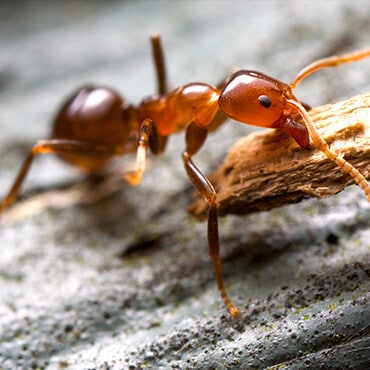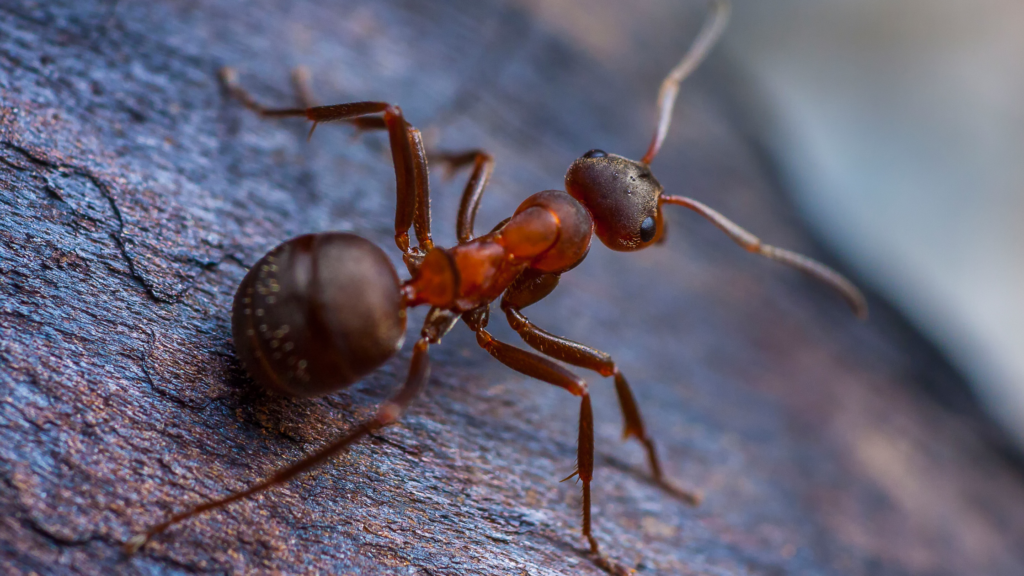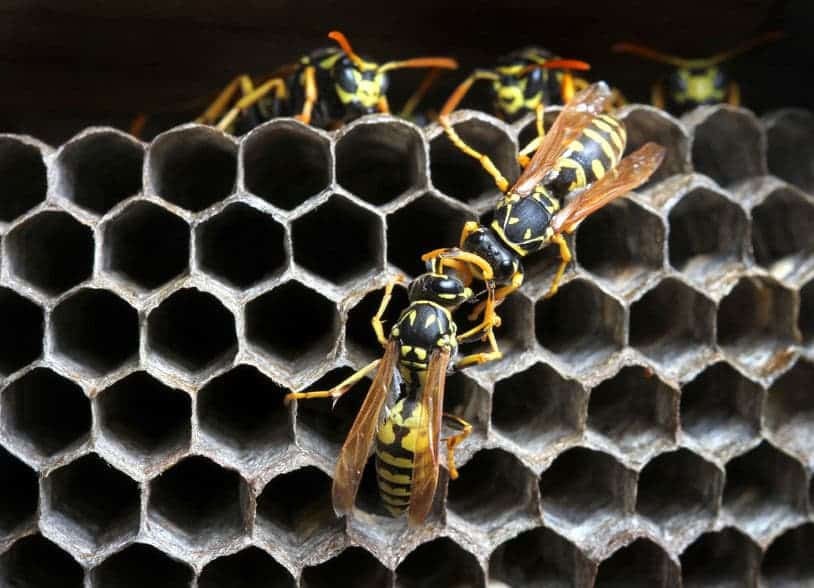
One of the most common questions we hear is “How do I get rid of ants?” These pests can be a nuisance anytime of year, but they do become more of a problem during our warmer months. As summer turns to fall, ants will be foraging heavily, particularly in northern Florida.
As we head further into the season when ants are most active, it’s helpful to know more about the different types of ants you’re most likely to encounter, both indoors and outdoors, and which ones are threats vs. merely annoying. Below are many of the types of ants you’ll find in various places around your Florida home and yard where they seek the water and nutrition they need.
Florida Carpenter Ant
Not every type of ant is suited for both indoor and outdoor living, but the Florida carpenter ant is. That’s because they prefer moist wood, which can be found anywhere.
With humidity levels being high for much of the year and more than one rainy season in Florida, these ants can easily locate an inviting spot. Keep an eye out for them under porches or decks, beneath eaves, and around and beneath windows. They may also nest in landscaping timbers, logs, and other types of damp wood around your property. Keep in mind that if you have a significant Florida carpenter ant problem, you likely have a moisture issue as well, so check for hidden leaks both indoors and around the outside of your home.
While Florida carpenter ants can bite, they’re not a serious threat to you or your pets since they don’t transmit any diseases or actually inject venom.
Fire Ant
The first and most important thing to know about fire ants is that they are aggressive and dangerous. They don’t just sting—they sting repeatedly once they’ve attached themselves to skin. If you’ve accidentally stepped into a nest, they will quickly swarm up your legs. Although their stings are painful and itchy for almost everyone, some people can have severe, even fatal allergic reactions and should seek medical help at once.
These insects usually build mounds on flat spots out in the open, often close to structure foundations. They mostly stay underground in tunnels and columns that they’ve cleared underneath the mound.
Fire ant nests or colonies are highly resistant to most pesticides that are available to the general public. Because of the threat these ants pose to humans and pets, it’s best to call in a professional pest control provider.
Crazy Ant
Unlike almost all other types of Florida ants, crazy ants move erratically (hence, their name) and don’t always follow organized trails. Crazy ants bite when threatened, but their bite is most dangerous to invading insects rather than humans. They don’t have stingers.
Crazy ants aren’t choosy about their environment—they can thrive in dry and moist places. Because of this, they’ll nest in all types of spots, from inside the engines of cars to damp piles of leaf litter.
They usually stay outdoors, but will come inside houses or offices to look for both sweets and meat. Indoors, they may infest appliances and electronics, such as TVs, computers, and stereos, where they can chew through insulated wires and cause electrical shorts.
Pharaoh Ant
Pharaoh ants are common in Florida households and businesses, and it’s very difficult to get rid of them. DIY methods can even worsen the problem, causing the ants to build additional, new colonies in new locations. Rarely living outdoors, these pests prefer enclosed areas indoors, such as cabinets, electrical outlets, and wall voids.
Although they’re tiny, pharaoh ants are a health threat. They can carry dysentery and salmonellosis, so be sure to discard any food that shows signs of the presence of pharaoh ants. Medical care facilities are also threatened by these ants, which can contaminate rooms and sterile equipment.
If you suspect a pharaoh ant problem, it’s essential to have a pest control professional come in for extermination.
Ghost Ant
Many insects prefer to nest in undisturbed areas, but that’s not the case with ghost ants. This means they can be found in all types of places, and they build several nesting sites both indoors and outdoors. They’re very small, so by the time you notice more than a few, you may already have a significant ghost ant infestation.
They may cause some property damage, and they contaminate food, but they don’t sting and almost never bite.
How to prevent ants
The guidance for ant prevention is much the same as it is for most types of pests: don’t provide the food, water, or nesting sites they seek.
Here are some steps you can take to keep ants from taking over:
- Keep a clean house: Ants are unsurpassed when it comes to finding food sources. Even a few crumbs is enough for one ant to spread the word that food for the colony is available in your kitchen. Clean countertops and floors frequently, seal food in airtight containers, and dispose of garbage often.
- Reduce moisture sources: Inspect the interior and exterior of your home for leaks and condensation, and remove any sources of even tiny amounts of water.
- Seal entry points: The smallest openings provide a way in for ants. Look for cracks and crevices around your home and seal them with silicone caulk. Keep weather stripping in good condition and repair loose mortar along your foundation.
- Remember pet bowls: These can make it easy for ants to find what they need. Clean and dry pet bowls each night.
Count on our professional ant control service
Ant infestations are tough to get rid of, so your best course of action is to call Turner Pest Control as soon as you see signs of ants. Our expert technicians will provide a free, no-obligation inspection and estimate on taking care of your ant problem.



